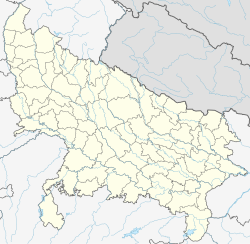Gamhira
This article will address the topic of Gamhira, which has been the subject of interest and debate in various areas. Gamhira has aroused the interest of experts and the general public due to its relevance and impact in different areas. Throughout history, Gamhira has been the object of study and analysis, which has allowed us to delve deeper into its meaning and significance. In this sense, it is essential to delve into the different approaches and perspectives that exist around Gamhira, in order to understand its importance and contribution in the field in which it operates. This article aims to provide a broad and detailed vision of Gamhira, providing elements that enrich knowledge and promote a critical and reflective analysis of this topic.
Gamhira | |
|---|---|
Village | |
| Coordinates: 27°01′08″N 78°58′17″E / 27.01881°N 78.97127°E | |
| Country | India |
| State | Uttar Pradesh |
| District | Mainpuri |
| Tehsil | Karhal |
| Area | |
• Total | 2.386 km2 (0.921 sq mi) |
| Population (2011)[1] | |
• Total | 1,250 |
| • Density | 520/km2 (1,400/sq mi) |
| Time zone | UTC+5:30 (IST) |
| PIN | 205264 |
Gamhira (Gamhirā), also spelled Gambhira (Gambhīrā), is a village in Karhal block of Mainpuri district, Uttar Pradesh. As of 2011, it has a population of 1,250, in 214 households.
Geography
There is a prominent jhil at Gamhira.[citation needed]
Demographics
As of 2011, Gamhira had a population of 1,250, in 214 households.[1]: 149 This population was 52.1% male (651) and 47.9% female (599). The 0-6 age group numbered 202 (113 male and 89 female), or 16.2% of the total population. 283 residents were members of Scheduled Castes, or 22.6% of the total.[2]: 112–3
The 1961 census recorded Gamhira (as "Gambhira") as comprising 3 hamlets, with a total population of 568 people (311 male and 257 female), in 94 households and 86 physical houses. The area of the village was given as 600 acres.[3]: lviii
Infrastructure
As of 2011, Gamhira had 1 primary school; it did not have any healthcare facilities. Drinking water was provided by well, hand pump, and tube well; there were no public toilets. The village had a post office but no public library; there was at least some access to electricity for all purposes. Streets were made of both kachcha and pakka materials.[1]: 142–7
References
- ^ a b c d "Census of India 2011: Uttar Pradesh District Census Handbook - Mainpuri, Part A (Village and Town Directory)" (PDF). Census of India. Retrieved 19 June 2023.
- ^ "Census of India 2011: Uttar Pradesh District Census Handbook - Mainpuri, Part B (Village and Town Wise Primary Census Abstract)" (PDF). Census of India. Retrieved 19 June 2023.
- ^ Census 1961: District Census Handbook, Uttar Pradesh (24 - Mainpuri District) (PDF). Lucknow. 1965. Retrieved 25 December 2021.
{{cite book}}: CS1 maint: location missing publisher (link)
